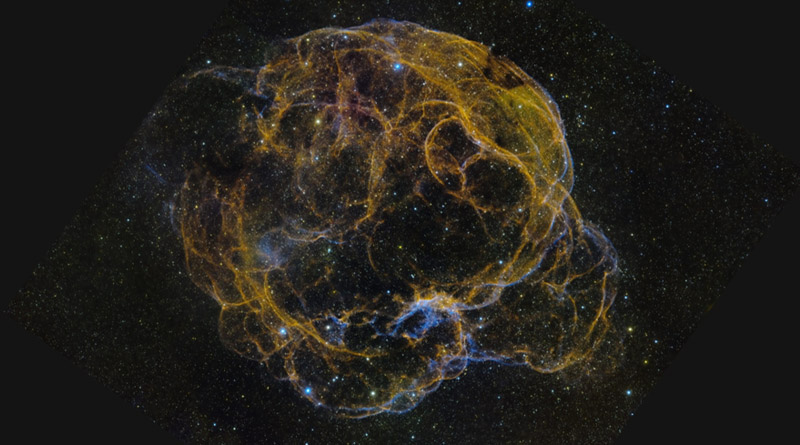Catching Up: Jeff Bennett’s Tele Vue-NP127is Images
Back in 2018, when this blog was still under 100 posts, we featured Jeff Bennett and his Tele Vue-NP127is images. At the time, he praised the scope as an “easy-to-use system that is excellent for both visual use and astrophotography. The scope provides an excellent FOV at f/5.2 with tack-sharp images to the edge.”
We thought it was time to catch up with Jeff and see what he’s been imagining in the five years since we met him. We contacted him and he told us: “I still use and enjoy using my NP127is.” Below we present some of his imaging work since the 2018 blog post.
Pelican Nebula
The Pelican Nebula (IC 5067 and IC 5070 extending from center to bottom of the image — including the ruby-hued stars) is nestled up against its neighbor, the North America Nebula (NGC 7000 — East Coast on the left of image). They are both part of the same ionized cloud of hydrogen gas, but appear as two objects because of an intervening cloud of gas that absorbs the light of the nebula behind it. This image is taken through Hubble Pallet narrow-band filters that isolate light emitted by various ionized gasses in the nebula. By assigning each filtered image a color channel, the resulting false color image displays the layers occupied by these ionized atoms and creates a sense of dimensionality in the structure.

Triangulum Galaxy
Triangulum Galaxy (M33) received its name from the northern constellation it resides in: Triangulum (the Triangle). Among the spiral arms of this face-on galaxy are star clusters and star-forming regions. The yellow core indicates older, smaller, long-lived stars. It was the first galaxy to be identified as having a “spiral” structure. We can see these details because, at a distance of only 3-million light-years, this 50,000 light-year diameter galaxy is relatively close and large. In fact, it is the 3rd largest member of our “Local Group” of galaxies after the Andromeda galaxy and our own Milky Way. At 5.72 visual magnitude, it is one of the most distant objects that can be viewed naked eye in a dark sky. Billions of years from now we’ll have a better view of M33 as it and other members of the Local Group are destined to collide!

Jellyfish Nebula
The Jellyfish Nebula (IC 443) lies in the toes of the constellation Gemini near Eta Geminorum (bright yellow star seen at top of image). The striking burst-bubble-shaped supernova remnant (shown in yellow in this narrowband image) contains a neutron star. The glowing green structure to the bottom left is the IC 444 nebula that appears to “holds back” the jellyfish by a tenuous connection.

We wish Jeff clear skies and continued success in astro-imaging with his NP127is.
Did you observe, sketch, or image with Tele Vue gear? We’ll like your social media post on that if you tag it #televue and the gear used. Example:
#televue #np127is #m33
Do you want your Tele Vue images re-posted on Tele Vue Optics’ Social Media accounts? Use this hashtag for consideration:







